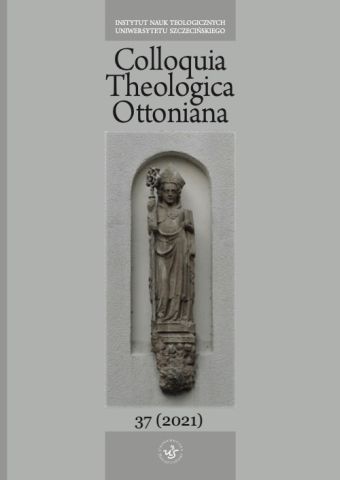
ISSN: 1731-0555
eISSN: 2353-2998
OAI
DOI: 10.18276/cto.2021.37-11




Issue archive /
37/2021
Wolność religijna w kontekście chrześcijańskich mniejszości religijnych w regionie MENA
(Religious freedom in the context of Christian religious minorities in the MENA region)
| Authors: |
Justyna
Salamon

Uniwersytet Jagielloński, Polska |
| Keywords: | Christians freedom religion tolerance |
| Data publikacji całości: | 2021-12-15 |
| Page range: | 16 (189-204) |
Abstract
The aim of this article is to analyse the religious, social, and political situation of Christians in Muslim countries in the MENA region (North Africa and the Middle East). The first part of this article presents considerations and definitions. In addition to the historical outline, information relating to the contemporary situation during the COVID-19 pandemic is presented. The focus of the research was to answer the question of how the situation of Christians has changed. Did the restrictions introduced affect the celebration of religious practices? Were Christians discriminated against in accessing health care and social assistance? Attention was also paid to the statistical data published both by the Christian non-profit organisation “Open Doors” and by the American non-profit organisation “Freedom House.”
This article uses the historical method, also known as the genetic method. Its main purpose is a chronological description of the evolution of the status of religious minorities in Muslim countries. A comparative method devised by Arendt Lijphart was also used. Romanian religious scholar Mircea Eliade was also a proponent of combining the comparative and historical methods. Eliade believed that religious studies should use two mutually complementary methods: the phenomenological description of religious structures and the historical-comparative method – a holistic approach to religion. In the context of research, the general concept of man, according to which he is a religious being (“homo religiosus”), is relevant. Reference was made to relevant Spanish-language. The last part of the article compares the persecution of Christians with the phenomenon of Islamophobia to show the similarities or differences between the two negative phenomena.
Download file
Article file
Bibliography
| 1. | Algeria: Freedom in the World 2021 Country Report, Freedom House. |
| 2. | Cairo Declaration on Human Rights in Islam, Aug. 5, 1990, U.N. GAOR, World Conf. on Hum. Rts., 4th Sess., Agenda Item 5, U.N. Doc. A/CONF.157/PC/62/Add.18 (1993). |
| 3. | Cantó Rubio J., Carta de París para una nueva Europa OSCE 1990 (1992), Torrevieja. |
| 4. | Declaración de Principios sobre la Tolerancia, 16.11.1995, http://portal.unesco.org/es/ev.phpURL_ID=13175&URL_DO=DO_TOPIC&URL_SECTION=201.html (8.02.2019). |
| 5. | Deklaracja o wolności religijnej, Sobór Watykański II, Konstytucje. Dekrety. Deklaracje, Poznań 1968. |
| 6. | Egypt.pdf, uscirf.gov. |
| 7. | EIR_2018.pdf, islamophobiaeurope.com. |
| 8. | Eliott C.D., Developing Tolerance and Conservatism: A Study of Ibadi Oman, „UCLA Journal of Religion” 2 (2018), s. 146–179. |
| 9. | Europejska konwencja praw człowieka i podstawowych wolności, 4.11.1950, https://bip.ms.gov.pl/pl/prawa-czlowieka/europejski-trybunal-praw-czlowieka/tekst-europejskiej-konwencji-praw-czlowieka-i-podstawowych-wolnosci-wraz-z-protokolami-dodatkowymi/ (dostęp: 2.02.2019). |
| 10. | Freedom in the World 2021: Democracy under Siege, Freedom House, https://www.vaticannews.va/es/mundo/news/2021-01/persecucion-anos-en-mundo-pandemia-datos-informe.html. |
| 11. | Karta praw podstawowych Unii Europejskiej, 2016/C202/02 (Dz.Urz. UE C 202/389, 7.06.2016). |
| 12. | La Declaración Islámica Universal de los Derechos Humanos, 19.09.1981, http://www.amnistiacatalunya.org/edu/docs/e-mes-islam-1981.html (dostęp: 5.02.2019). |
| 13. | Leon XIII, Encyklika „Libertas praestantissimum” o wolności człowieka, 1888, http://www.ptm.rel.pl/czytelnia/dokumenty/dokumenty-papieskie/47-leon-xiii/231-encyklika-libertas-praestantissimum.html (dostęp: 1.02.2019). |
| 14. | Ley 26/1992, de 10 de noviembre, por la que se aprueba el Acuerdo de Cooperación del Estado con la Comisión Islámica de España, BOE, núm. 272, 12.11.1992. |
| 15. | Ley 44/1967, de 28 de junio, regulando el ejercicio del derecho civil a la libertad en materia religiosa, BOE, núm. 156, 1.07.1967. |
| 16. | Ley Orgánica 7/1980, de 5 de julio, de Libertad Religiosa, BOE, núm. 177, 24.07.1980. |
| 17. | Międzynarodowy pakt praw obywatelskich i politycznych otwarty do podpisu w Nowym Jorku dnia 19 grudnia 1966 r., Dz.U. 1977, nr 38, poz. 167. |
| 18. | Misztal H., Geografia prześladowań chrześcijan w krajach islamskich, „Studia z Prawa Wyznaniowego” 17 (2014), s. 91–110. |
| 19. | Pacto Internacional de Derechos Civiles y Políticos, hecho en Nueva York el 19 de diciembre de 1966. Instrumento de Ratificación de España de 13 de abril de 1977, BOE, núm. 103, 30.04.1977. |
| 20. | Powszechna deklaracja praw człowieka, 10.12.1948, http://libr.sejm.gov.pl/tek01/txt/onz/1948.html (dostęp: 1.02.2019). |
| 21. | Saudi Arabia.pdf, uscirf.gov. |
| 22. | Sokołowski T., System prawny wobec prześladowania religijnego dzieci, „Ruch Prawniczy, Ekonomiczny i Socjologiczny” LXXIII (2011) 2, s. 139–147. |
| 23. | Traslosheros J.E., Fundamentos de la libertad religiosa, w: Libertad religiosa y Estado laico. Voces, fundamentos y realidades, red. J.E. Traslosheros, Porrúa 2012. |
| 24. | Wąsik L., Zasada wolności religijnej w Deklaracji o wolności religijnej „Dignitatis humanae” Soboru Watykańskiego II, „Analecta Cracoviensia” (2015) 47. |